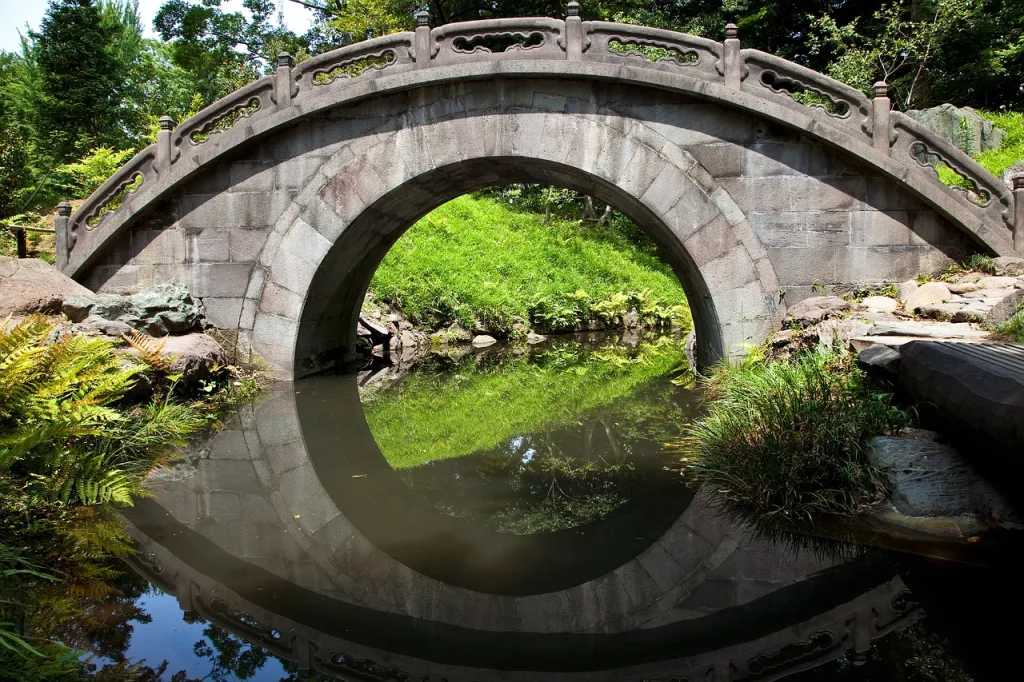Creating your own Zen garden may seem like a daunting task, reserved for experienced gardeners or the spiritually enlightened. However, the truth is that anyone can create their own Zen garden, regardless of their level of gardening expertise or knowledge of Zen philosophy. By embracing simplicity, harmony, and tranquility, you can transform even the smallest of spaces into a peaceful oasis that promotes relaxation and mindfulness. With a few key elements and a little creativity, you can embark on a journey to create your own Zen garden and experience its restorative benefits firsthand. Yes, absolutely! Creating your own Zen garden is a fulfilling and rewarding experience that anyone can embark on. Whether you are a seasoned gardener or a beginner with little to no experience, the concept of a Zen garden is accessible to all. By understanding the origins, components, and principles of Zen gardens, you will be well-equipped to design, prepare, and create your very own serene oasis right in your backyard.
Understanding the Concept of a Zen Garden
Origins and history of Zen gardens
Zen gardens, also known as “karesansui” in Japanese, are a unique form of garden that originated in Japan during the Muromachi period (1336-1573). These gardens were inspired by Zen Buddhism, an influential philosophy that emphasizes meditation, mindfulness, and a deep connection with nature. Zen gardens were initially created by Buddhist monks as a means of facilitating meditation and cultivating inner peace.
Importance in Japanese culture
Zen gardens hold great importance in Japanese culture, as they are believed to symbolize the essence of nature and the universe. Japanese people have long held a deep appreciation for the art of minimalism, and Zen gardens perfectly embody this concept. Furthermore, these gardens serve as a place of refuge and tranquility, providing a space for introspection, contemplation, and spiritual rejuvenation.
Symbolism and purpose of Zen gardens
Zen gardens are carefully designed to represent various elements of nature, creating a harmonious and balanced environment. They often feature an arrangement of rocks, sand or gravel, water features, and strategically placed plants. The rocks symbolize mountains or islands, while the sand or gravel represents water or waves. The patterns raked into the sand resemble ripples or flowing streams.
The purpose of a Zen garden is to create a space that encourages mindfulness, reflection, and a sense of calm. These gardens aim to evoke a sense of harmony and tranquility in the viewer, allowing one to escape the stresses of daily life and find peace in the present moment. The simple and minimalistic design of Zen gardens serves to eliminate distractions and foster a deep connection with nature.
The Elements of a Zen Garden
Main components of a Zen Garden
Zen gardens typically consist of several key elements that work together to create a serene and balanced atmosphere. These elements include rocks, sand or gravel, water features, and carefully chosen plants. Each component plays a vital role in the overall design and symbolism of the garden.
Importance of rocks and sand
Rocks are one of the most important elements in a Zen garden. They are strategically placed to represent mountains or islands and act as focal points for contemplation. The selection of rocks is crucial, as the size, shape, color, and texture should all contribute to the desired aesthetic and symbolism of the garden.
Sand or gravel is another essential component of a Zen garden. It is used to create patterns that represent water, ripples, or waves. The act of raking the sand is considered a meditative practice that promotes focus and mindfulness. The simplicity and Zen-like quality of the patterns evoke a sense of peace and serenity.
Role of water and plants in Zen gardens
Water features, such as small ponds or streams, are often incorporated into Zen gardens. The sound and movement of water contribute to the overall tranquility of the space. Additionally, water provides a sense of harmony and balance, representing the flow of life and the ever-changing nature of existence.
Plants are carefully selected to complement the minimalist aesthetic of Zen gardens. The focus is usually on evergreen plants, moss, and low-maintenance shrubs that require minimal pruning or attention. The plants should create a sense of harmony with the other elements while adding a touch of natural beauty to the garden.

Designing Your Zen Garden
Understanding Zen principles for designing
When designing your Zen garden, it is important to keep in mind the core principles of Zen Buddhism. These principles include simplicity, harmony, balance, and the invitation of mindfulness. By incorporating these principles into your design, you can create a space that promotes peace and tranquility.
Choosing the size and location of the garden
The size and location of your Zen garden will depend on the available space and your personal preferences. Whether you have a small backyard or a spacious courtyard, you can create a Zen garden that fits your unique needs. Consider factors such as sunlight exposure, proximity to the house, and any existing natural features that can be incorporated into the design.
Deciding on the layout considering the elements
The layout of your Zen garden should be carefully planned to ensure a harmonious arrangement of the elements. Start by mapping out the areas for rocks, sand or gravel, water features, and plants. Pay attention to the flow and balance of the design, aiming for a sense of simplicity and symmetry. Experiment with different arrangements until you find the layout that resonates with you.
Preparing the Space for Zen Garden
Clearing and cleaning the site
Before starting your Zen garden project, it is important to clear and clean the site. Remove any existing plants, debris, or structures that may interfere with the design. Take the time to thoroughly tidy the area to create a clean and blank canvas for your Zen garden.
Assessing soil and sun exposure
Once the site is clear, assess the quality of the soil and determine its suitability for the plants you intend to include in your Zen garden. Consider the amount of sunlight the area receives throughout the day, as different plants have varying light requirements. If necessary, amend the soil and make any necessary adjustments to optimize growing conditions.
Preparing the ground including landscaping needs
Before proceeding with the installation of the elements, it is important to prepare the ground. This may involve leveling the soil, installing landscape fabric to prevent weed growth, and constructing any necessary boundaries or edging. Take the time to carefully plan and execute these preparations to ensure a sturdy and long-lasting Zen garden.

Choosing the Right Materials
Types of rocks suitable for Zen gardens
When selecting rocks for your Zen garden, opt for naturally weathered stones with interesting shapes and textures. Granite, basalt, limestone, and sandstone are commonly used due to their durability and aesthetic appeal. Avoid rocks that are too large or heavy, as they may overwhelm the garden and make it difficult to achieve a sense of balance.
Choosing the right sand or gravel
When it comes to sand or gravel, choose materials that have a fine texture, such as crushed granite or white sand. The color should complement the rocks and create a soothing visual effect. Keep in mind that the sand or gravel should be spread evenly and compacted to ensure stability and longevity.
Selecting plants for a minimalist approach
In a Zen garden, plants should be selected with a focus on simplicity, low maintenance, and year-round appeal. Evergreen plants, such as Japanese maple, bamboo, and juniper, are excellent choices as they provide year-round foliage and require minimal care. Consider incorporating moss, which adds a lush green element and symbolizes resilience and adaptability.
Considering moss, bridges, and other traditional elements
Along with plants, other traditional elements can be included in your Zen garden to enhance its overall ambiance. Moss-covered rocks, miniature bridges, or stone lanterns are common features that add depth and authenticity to the design. These elements contribute to the sense of tranquility and connection with nature that Zen gardens aim to cultivate.
Creating Your Zen Garden
Placing and arranging the rocks
The placement and arrangement of rocks in your Zen garden is a crucial step in the creation process. Experiment with different configurations, focusing on achieving visual balance and a sense of calm. Avoid overcrowding the space and aim for a harmonious arrangement that reflects the natural beauty of a mountainous or island landscape.
Spreading the sand or gravel
Once the rocks are in place, carefully spread the sand or gravel to create a smooth and consistent surface. Use a rake or a wooden tool to create patterns that simulate the flow of water. The act of raking the sand can be a meditative practice, allowing you to immerse yourself in the present moment and find a sense of tranquility.
Adding plants and other elements
Once the foundation of rocks and sand is set, it is time to add the plants and other elements to your Zen garden. Place the plants strategically, ensuring they enhance the overall aesthetic and balance of the design. Consider adding moss to bare areas of the garden, as it adds a touch of greenery and natural texture.
Raking patterns in the sand
Raking patterns in the sand is a meditative and expressive practice that adds an artistic touch to your Zen garden. Experiment with different rake patterns, such as concentric circles, straight lines, or swirling curves. The patterns should flow naturally and evoke a sense of peacefulness and harmony. Engage in the process with mindfulness, allowing your creativity to guide your movements.

Maintaining Your Zen Garden
Routine care for plants and moss
To ensure the longevity and health of the plants in your Zen garden, establish a routine care schedule. Regularly water the plants, prune any overgrowth, and remove weeds or debris that may accumulate. Moss, being a living organism, requires appropriate moisture levels and occasional cleaning to maintain its vibrant green appearance.
Maintaining the clarity of the sand or gravel
The sand or gravel in your Zen garden may require occasional maintenance to keep it looking pristine. Remove any fallen leaves or debris that may accumulate on the surface. If the sand becomes uneven or disturbed over time, use a rake to smooth it out and recreate the desired patterns. Regular maintenance will help preserve the clarity and visual appeal of the sand or gravel.
Preserving the layout and design integrity
The layout and design of your Zen garden should be maintained to preserve its intended aesthetic and spiritual significance. Regularly inspect the rocks and ensure they are securely in place. If any plants become overgrown or lose their shape, trim them accordingly. Take the time to appreciate and care for your Zen garden, and it will continue to provide a sanctuary of peace and beauty.
Benefits of Having a Zen Garden
Contributions to mental peace and mindfulness
Having a Zen garden can significantly contribute to mental peace and mindfulness. The serene atmosphere and minimalistic design promote a sense of tranquility, allowing you to escape the worries and stresses of daily life. The act of caring for and reflecting in your Zen garden can be a meditative practice, helping to cultivate a calm and focused state of mind.
Place for meditation and contemplation
A Zen garden serves as an ideal space for meditation and contemplation. The peaceful ambiance and natural elements create an environment that is conducive to quiet reflection. Whether you choose to sit by the garden, practice mindful walking, or engage in seated meditation, your Zen garden can become a sanctuary for self-discovery and self-awareness.
Boosting the aesthetic appeal of your home
In addition to the mental and spiritual benefits, a Zen garden can also enhance the aesthetic appeal of your home. The minimalistic design and careful selection of elements create a visually pleasing and harmonious landscape. Whether you have a traditional or contemporary style of home, a Zen garden can complement and elevate the overall aesthetic, creating a serene and inviting atmosphere.
Common Mistakes While Making Zen Gardens
Discounting the importance of symmetry and balance
One common mistake when creating a Zen garden is overlooking the significance of symmetry and balance. These gardens strive to evoke a sense of harmony and equilibrium, and an imbalanced design can disrupt the intended atmosphere. Take the time to carefully arrange the elements, ensuring they work together to create a visually pleasing and balanced composition.
Using inappropriate materials or elements
Another common mistake is using inappropriate materials or elements that do not align with the principles of Zen gardens. Instead of striving for simplicity and minimalism, the garden may become cluttered or overwhelming. It is important to carefully consider each element and its symbolic significance to ensure they contribute to the desired aesthetic and purpose.
Failure to maintain the garden properly
A Zen garden requires regular maintenance to preserve its intended design and symbolism. Neglecting routine care, such as pruning plants or raking the sand, can lead to an unkempt appearance and diminish the peaceful atmosphere. Make a habit of dedicating time to the upkeep of your Zen garden, and it will continue to provide a haven of tranquility for years to come.
Possible Challenges and Solving Them
Dealing with outdoor elements and weather
One challenge when creating and maintaining a Zen garden is dealing with outdoor elements and weather conditions. Extreme temperatures, heavy rainfall, or strong winds can affect the stability and integrity of the garden. To mitigate these challenges, choose durable materials, secure elements firmly, and consider installing protective structures, such as awnings or windbreaks.
Handling plant growth and pruning
Plants in your Zen garden may require regular pruning or trimming to maintain their desired shape and size. It is important to stay vigilant and regularly inspect the plants for any overgrowth or dead branches. Keep pruning tools handy and familiarize yourself with proper pruning techniques to ensure the health and aesthetic appeal of the plants.
Sustaining the clarity of the raked sand patterns
Preserving the clarity of the raked sand patterns can be a challenge, particularly in windy or high-traffic areas. To minimize disruption, choose a sheltered location for your Zen garden, away from heavy foot traffic. Use a fine sand or gravel that is less prone to scattering, and consider placing decorative stones or borders around the sand to help contain and protect the patterns.
In conclusion, creating your own Zen garden is an enriching and fulfilling endeavor that can bring a sense of peace and mindfulness to your life. By understanding the origins, components, and principles of Zen gardens, you can embark on a journey of designing, preparing, and creating a sanctuary of tranquility in your own backyard. The careful selection of rocks, sand or gravel, plants, and other traditional elements will contribute to the harmony and balance of your Zen garden, while regular maintenance will help preserve its intended aesthetic and spiritual significance. Embrace the benefits of having a Zen garden, and enjoy the mental, spiritual, and aesthetic rewards it brings to your home and well-being.




